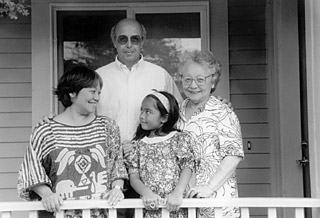3. Trauma Intervention as Dialogue
An alternative approach would be for the help to be contextualized as a dialogue among equals. It is a dialogue that is familiar to the psychoanalyst: it is the question of what method is best employed in response to traumatic circumstance. Should the trauma be discharged and avoided, or should it be acknowledged, symbolized and transformed? Is the most benefit to be gained by tying the social knot and tradition tighter through acts of revenge, penitence, scapegoating, prayer and/or rewriting the cultural narrative into a story of heroism, punishment, or martyrdom? Or is there a greater benefit in acknowledging the rend in the social fabric, mourning the tragedy, and attempting to transform the experience into a reorganizing of the cultural structure so that it includes a humbler acknowledgement of limitation, mortality and human compassion? This is a question of competing values, and has been the subject of debate within and between cultures, worldwide, for centuries. If psychoanalysis can contribute one thing to the discussion it is that imposing values and repressing alternatives does not work. The repressed returns, often with a build-up of explosive energy. The alternative is dialogue, articulating a value system, and upholding it by choosing the response to trauma. A chosen response is invariably painful, because it includes compromise with complete energic discharge, and it does not permit the simple characterizations of the participants proposed by both the survivors of trauma and by those who would aid them.
Without finding the space for bringing these different perspectives to the surface we, who offer our aid in trauma circumstances, run the risk of taking a superior, moralistic position, which is given lip service by those we are attempting to “aid,” who all the while privately maintain a distance, perhaps a contempt, for what we are imposing. 1 The danger is that international aid organizations will be seen as a new kind of missionary, espousing the religion of human rights, while creating an environment of Western social and economic values.
From a psychoanalytic point of view, we know we are asking a lot of both sides simply to engage, instead, in a dialogue. It is difficult for the “helpers” to dispense with their own mechanisms for avoiding trauma – in this case, the position of superiority. Even more difficult is to ask that the traumatized abandon their familiar modes of avoiding trauma – in Kosovo for example, we are asking the Kosovar Albanians to give up the opportunity to avenge their dead and memorialize them with an independent Albanian country – when all we have to offer in their place is the experience of the pain of trauma, coupled with techniques of treatment that most often focus on the individual experience of and working through of that pain.
As my own analyst, Martin Bergmann, put it, we are asking for the trauma survivor to exchange revenge (or a host of other mechanisms of trauma avoidance) for memory:
I believe that the cultivation of memory is a sublimation of the wish for revenge. It is certainly nobler and more civilized than revenge, but it also raises problems. Revenge is a form of discharge. By contrast, the cultivation of memory remains a psychically active force, but one without an outlet. (Bergmann and Jucovy 324)
Bergmann’s biases are clear, memory is “nobler and more civilized” than revenge, and I have to admit, I share them. I believe that, although we are asking a lot, what we have to offer in exchange is something extremely valuable. What we are offering is the opportunity to learn something new from the past, to transform the traumatic experience into a gain for humanity, so that victims do not continue the cycle of violence and hatred, so that survivors transform, rather than join, the evil. The psychoanalytic position, I believe, is that if the traumatic pain can reach a level where it is tolerated, rather than avoided, there is an opportunity in which everything may be productively questioned, and psychical and cultural alternatives may be posited and put into action.
A major difficulty, as Bergmann has pointed out, is that when we offer memory in exchange for revenge, what we are really offering is a way to keep the trauma active, but with no outlet. Memory and memorializing maintain pain, maintain energy, but do not present a mechanism for returning the energy to the world; memories alone, whether held in the psyche, symbolized in a memorial or placed in an archive, do not make for an active response to trauma.
I believe that to make this exchange – the exchange of trauma avoidance in favor of trauma transformation – possible and worthwhile, at least two things are required: first, a mutually respectful dialogue, validating the humanity of the experience and response of all participants and an active outlet for trauma transformation, to counter the many active outlets for trauma avoidance (nationalism, religious fundamentalism, revenge); an active outlet that is creative, rather than destructive. One way has been to add mechanisms of justice and reconciliation to truth commissions. Another, to draw upon or create rituals of mourning. A third, relevant to the current discussion is to turn to the artist and to the arts.
- One Kosovar participant in our project described this process as a “parallel system,” a reference to the covert Kosovar system for maintaining Albanian culture during the Serbian occupation. In contemporary circumstances, this referred to a surreptitious, culturally sanctioned mode of dealing with international aid organizations, almost as if they constituted another occupying power.[↑]



